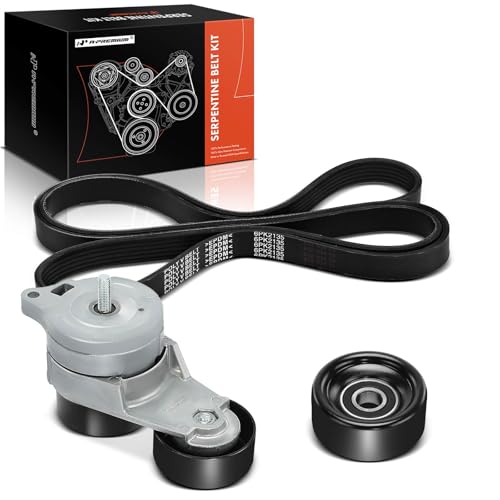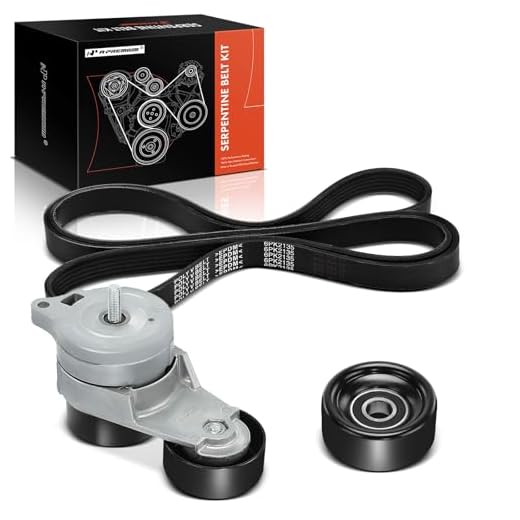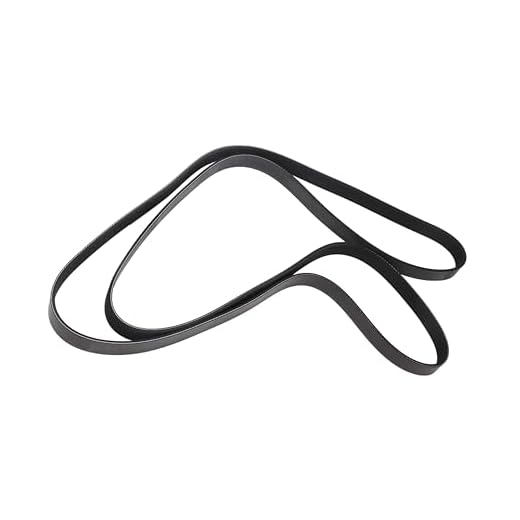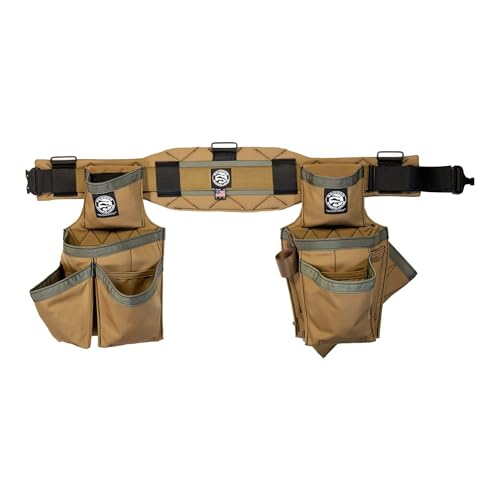




If you are a car enthusiast or even just a regular car owner, you have probably heard about the serpentine belt. This essential part of your car’s engine helps to power various components, such as the alternator, AC compressor, and power steering pump. Over time, the serpentine belt can wear out and need to be replaced.
Replacing a serpentine belt may seem like a daunting task, but it can be done with the right tools and knowledge. One tool that can be incredibly useful during this process is a serpentine belt tool. This handy tool is designed specifically for removing and installing serpentine belts, making the job much easier and more efficient.
So, do you need a serpentine belt tool? The answer depends on your level of experience and comfort working on cars. If you are a professional mechanic or have experience working on cars, a serpentine belt tool can be a valuable addition to your toolbox. It can save you time and make the job of replacing a serpentine belt much simpler.
What is a Serpentine Belt Tool?
A serpentine belt tool, also known as a serpentine belt wrench or tensioner tool, is a specialized tool used to install or remove the serpentine belt in a vehicle. The serpentine belt is an essential component of the engine’s accessory drive system, transferring power from the crankshaft to various engine accessories such as the alternator, power steering pump, and air conditioning compressor.
The serpentine belt tool typically consists of a long handle with a square or hexagonal socket at one end. The socket is designed to fit the specific size and shape of the tensioner pulley bolt, allowing the user to rotate the tensioner and release the tension on the serpentine belt. By relieving the tension, the belt can be easily removed or installed without the need for excessive force or potential damage to the belt or other engine components.
Using a serpentine belt tool can save time and effort when working on the serpentine belt system. It provides a secure grip on the tensioner pulley bolt and allows for controlled movement of the tensioner, making belt installation and removal much easier and safer. Additionally, the tool ensures proper tension is applied to the serpentine belt, which is crucial for the correct functioning of the accessory drive system.
Overall, a serpentine belt tool is an essential tool for any mechanic or car enthusiast working with serpentine belts. It helps to simplify the process of belt installation and removal, reducing the risk of damage to the belt or other engine components, and ensuring optimal performance of the accessory drive system.
Understanding the Purpose and Function of the Tool
The Importance of the Serpentine Belt
The serpentine belt is responsible for driving multiple engine components, such as the alternator, power steering pump, water pump, and air conditioning compressor. Without a functioning serpentine belt, these components would not be able to operate properly, leading to issues with the car’s electrical system, power steering, engine cooling, and climate control.
Over time, the serpentine belt can wear out or become damaged due to factors like excessive heat, friction, or mechanical stress. When this happens, it needs to be replaced to ensure the continued performance of the engine.
The Purpose of the Serpentine Belt Tool
The serpentine belt tool is used to relieve tension on the belt, allowing for its removal or installation. It typically consists of a long bar with various attachments that fit into the belt tensioner pulley or other components to manipulate the belt.
By utilizing the serpentine belt tool, mechanics and car enthusiasts can easily move the tensioner pulley and create slack in the belt, making it easier to remove or install. This tool ensures that the belt is properly tensioned, preventing premature wear, slippage, or damage to the belt and associated engine components.
Advantages of Using a Serpentine Belt Tool:
- Ease of Use: The serpentine belt tool simplifies the task of working with the serpentine belt, making the job quicker and more efficient.
- Prevention of Damage: Using the tool correctly helps prevent damage to the belt and other engine components by ensuring proper tensioning.
- Versatility: Different attachments allow the tool to be used with various types of tensioner pulleys, making it suitable for a wide range of vehicles.
Overall, the serpentine belt tool is a valuable tool for anyone working on car engines, enabling them to safely and effectively install or remove the serpentine belt. It simplifies the process and helps maintain the proper functioning of the engine’s vital components.
When Do I Need to Use a Serpentine Belt Tool?
A serpentine belt tool is a handy device that can make maintaining and replacing the serpentine belt in your vehicle much easier. While it may not be necessary for every serpentine belt job, there are a few situations where using a tool specifically designed for this task can be beneficial.
1. Belt Installation:
One common scenario where a serpentine belt tool is helpful is during the installation process. Putting a new serpentine belt onto the pulley system can be tricky, especially with limited space and tight configurations. A serpentine belt tool can provide the leverage and grip needed to properly route the belt and tension it, ensuring a secure and accurate installation.
2. Belt Tension Adjustment:
Belt tension is crucial for proper operation and longevity of the serpentine belt. When it comes to adjusting the tension, a serpentine belt tool can make the task much easier and more precise. It allows you to apply the necessary force to the tensioner pulley and easily move it to the desired position, avoiding any guesswork or potential damage to the belt.
Note: It is important to consult your vehicle’s manual or a reputable source to determine the correct tension specifications and procedure for your specific vehicle.
Overall, while a serpentine belt tool may not be required for every serpentine belt job, it can greatly simplify the installation and adjustment process. It can save you time, effort, and ensure that the belt is properly tensioned, leading to better performance and longevity of the belt and your vehicle.
Recognizing Common Signs and Symptoms of Belt Problems
As the serpentine belt is an essential component of your vehicle’s engine, it is important to be aware of common signs and symptoms that indicate potential belt problems. By recognizing these signs early on, you can prevent further damage and costly repairs.
One of the most noticeable signs of belt problems is a squealing or screeching noise coming from the engine. This noise is usually heard when you start the engine or accelerate. It is often caused by a loose or worn-out belt, or a misaligned pulley. If you hear this noise, it is recommended to have your belt checked and replaced if necessary.
Another sign of belt problems is a loss of power steering or air conditioning. If you find that it takes more effort to turn the steering wheel, or if your air conditioning is not operating at its usual level, it could be due to a worn-out or broken serpentine belt. In this case, it is important to have your belt inspected and replaced as soon as possible to avoid further damage to these components.
Visible wear or damage on the belt itself is also a sign of potential belt problems. Inspect the belt for any cracks, fraying, or missing ribs. If you notice any of these signs, it is crucial to have the belt replaced as soon as possible. Continuing to drive with a damaged belt can lead to complete belt failure and can cause significant damage to your engine.
Additionally, if you experience frequent battery problems or your vehicle starts to overheat, it could be a result of a faulty serpentine belt. The belt plays a crucial role in operating the alternator and water pump, which are essential components for the proper functioning of your vehicle’s electrical and cooling systems. Therefore, it is important to have your belt inspected if you encounter any of these issues.
Overall, it is essential to pay attention to the signs and symptoms of belt problems to ensure the longevity and proper functioning of your vehicle. Regular maintenance and inspections, as well as prompt replacement of a damaged belt, can save you from costly repairs and breakdowns on the road.
Benefits of Using a Serpentine Belt Tool
When it comes to working on your car’s serpentine belt, having the right tools is essential. One tool that can make the job much easier and more efficient is a serpentine belt tool. This handy device offers several benefits that will make your belt replacement or adjustment much smoother.
1. Easy Belt Tension Adjustment: A serpentine belt tool allows you to easily adjust the tension of your car’s serpentine belt. This is important because the proper tension ensures that the belt is gripping the pulleys correctly, preventing slipping and ensuring proper operation of various engine components.
2. Quick Belt Removal and Installation: With a serpentine belt tool, the process of removing and installing a belt becomes much quicker and simpler. The tool allows you to easily release tension on the belt, making it a breeze to remove and install a new belt or perform repairs.
3. Reduced Risk of Damage: Using a serpentine belt tool minimizes the risk of damaging the belt or other engine components during the removal and installation process. The tool ensures that the tension is released evenly, preventing sudden tension release that could potentially cause damage.
4. Increased Efficiency: By using a serpentine belt tool, you will be able to work more efficiently. The tool’s design allows for easy access to the belt, making the entire process quicker and smoother. This means less time spent on belt replacement or adjustment and more time on other important car maintenance tasks.
5. Versatility: Many serpentine belt tools come with additional features or attachments that increase their versatility. These may include hooks, extension bars, or different size adapters, allowing you to work on a variety of vehicle models and belt configurations.
6. Cost Savings: Investing in a serpentine belt tool can actually save you money in the long run. By being able to easily replace or adjust your serpentine belt yourself, you can avoid costly trips to the mechanic for a simple belt replacement or adjustment.
In conclusion, a serpentine belt tool offers several benefits that make it an essential tool for anyone working on their car’s serpentine belt. It provides easy belt tension adjustment, quick belt removal and installation, reduced risk of damage, increased efficiency, versatility, and cost savings. Investing in a serpentine belt tool will ultimately make the process of working on your car’s serpentine belt much easier and more efficient.
Efficiency and Safety Advantages of Proper Belt Maintenance
Proper maintenance and care of your serpentine belt can provide numerous efficiency and safety advantages for your vehicle. The serpentine belt plays a crucial role in powering various engine accessories, such as the alternator, power steering pump, and air conditioning compressor. Here are some key benefits of maintaining your serpentine belt:
- Increased Fuel Efficiency: A worn-out or loose serpentine belt can cause a decrease in power and efficiency, leading to increased fuel consumption. By regularly inspecting and replacing your serpentine belt when necessary, you can ensure optimal engine performance and improve fuel efficiency.
- Prevention of Engine Damage: A malfunctioning serpentine belt can lead to serious engine damage. If the belt snaps while the engine is running, various engine components can seize, causing expensive repairs. Regular belt maintenance helps identify any signs of wear or damage, allowing you to replace it before it fails.
- Improved Vehicle Safety: A failing serpentine belt can result in a loss of power steering, making it difficult to steer the vehicle. This can be particularly dangerous in emergency situations or at high speeds. By maintaining your serpentine belt, you can ensure reliable power steering and enhance vehicle safety.
- Extended Lifespan of Components: A well-maintained serpentine belt puts less strain on engine components, such as the water pump and alternator. By replacing the belt regularly, you can protect these components from excessive wear and extend their lifespan.
- Reduced Downtime and Repair Costs: Regular serpentine belt maintenance can help prevent unexpected breakdowns and costly repairs. By proactively addressing any belt issues, you can avoid being stranded on the road and save money on major repairs.
Overall, taking the time to properly maintain your serpentine belt can provide significant efficiency and safety advantages. By ensuring your belt is in good condition and replacing it when necessary, you can enhance fuel efficiency, prevent engine damage, improve vehicle safety, prolong the lifespan of components, and reduce downtime and repair costs. Regular inspections and the use of a serpentine belt tool can make the maintenance process easier and more efficient.
How to Choose the Right Serpentine Belt Tool
When it comes to choosing the right serpentine belt tool, there are several factors to consider. This tool is essential for removing and installing serpentine belts, which are used to power various components in your vehicle.
Here are some important things to keep in mind when selecting a serpentine belt tool:
| Factor | Consideration |
|---|---|
| Compatibility | Make sure the tool you choose is compatible with the serpentine belt system in your vehicle. Check the size and type of the required socket or wrench to ensure a proper fit. |
| Design | Look for a tool with a sturdy and ergonomic design. A comfortable grip and durable materials will make the job easier and reduce the risk of accidents. |
| Adjustability | An adjustable serpentine belt tool can accommodate different belt sizes and configurations. This versatility is important if you work on different types of vehicles. |
| Accessories | Consider whether the tool comes with any additional accessories or attachments. Some tools include extension bars, swivel heads, or specialized sockets, which can be useful for specific tasks or hard-to-reach areas. |
| Price | Compare prices for different serpentine belt tools from reputable brands. Consider the quality and features offered by each tool to ensure you’re getting the best value for your money. |
By carefully considering these factors, you can choose the right serpentine belt tool that meets your needs and allows you to efficiently and safely work on your vehicle’s serpentine belt system.
FAQ
What is a serpentine belt?
A serpentine belt is a long, continuous belt that drives multiple engine components such as the alternator, power steering pump, and air conditioning compressor.
Is a serpentine belt tool necessary for replacing a serpentine belt?
No, a serpentine belt tool is not absolutely necessary for replacing a serpentine belt, but it can make the job easier and more efficient.
What are the benefits of using a serpentine belt tool?
Using a serpentine belt tool can make it easier to release tension on the belt, remove the belt from the pulleys, and install a new belt. It can save time and effort compared to using other methods.







